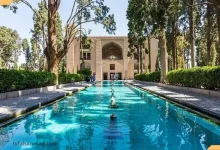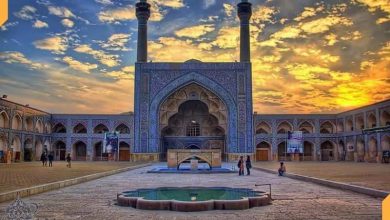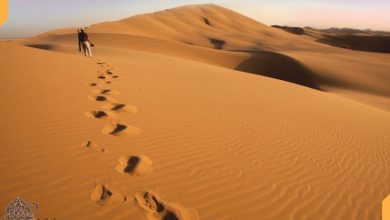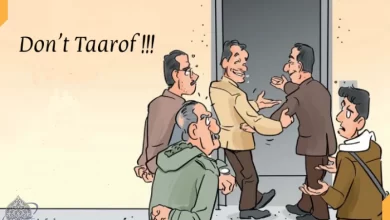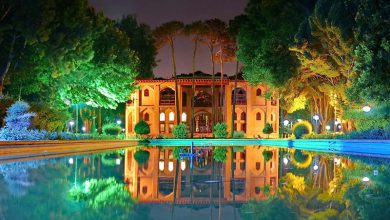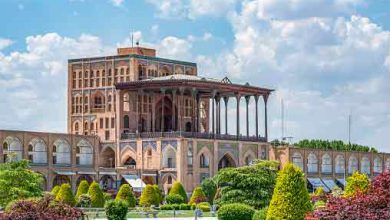Chehel Sotoon Palace

In this article, we intend to pay a visit to the corners of this big mansion and its beautiful garden and give you information like the architecture of Chehel Sotoun(Chehel Sotoon) and drawings that each of them includes a historical story. Be with us.
Chehel Sotoon Palace is one of the examples of royal gardens leftover from the Safavid period in the city of Isfahan, which is also known as the Chehelston Museum Garden.
In fact, this garden is a small part of the vast world-view garden that Shah Abbas I built by building a pavilion in the middle of the first core of Chehel Sotoon Palace.
A set of these gardens that were formed along Chaharbagh formed one of the foundations of Isfahan in the Safavid era, and the role of Chehel Sotoun Garden is different in this respect because of the connecting link between this foundation and another urban foundation, namely the World Role Collection.
Chehel Sotoun Garden has three entrances, the old one facing east. Upon entering the garden from the main door, after a short distance, we will reach the large pool in front of the mansion and then the building itself.
The main axis of the garden shows the direction of movement with the help of trees on both sides towards the main palace. Chehel Sotoon Garden has a very low slope that helps water to flow in the streams.
6 reasons to visit Isfahan’s Chehel Sotoon Palace
- It is one of the most famous places in Isfahan.
- The opportunity to visit Isfahan’s Chehel Sotoon Palace, where various kings once stepped in and took care of state affairs, is something that rarely happens.
- Chehel Sotoon Palace shows a pure and unique example of high Iranian art at its highest level and is kind of the best among the historical palaces of Isfahan.
- Chehel stoun Garden is an excellent example of famous Iranian gardens and is a part of UNESCO World Heritage.
- If you are interested in painting, painting and mirror work, Chehel Sotoon Palace is a great place for you.
- You can visit the Chehelstoon Museum, which contains a treasure trove of manuscripts related to the fourth century AH, paintings, works related to the Safavid period, etc.
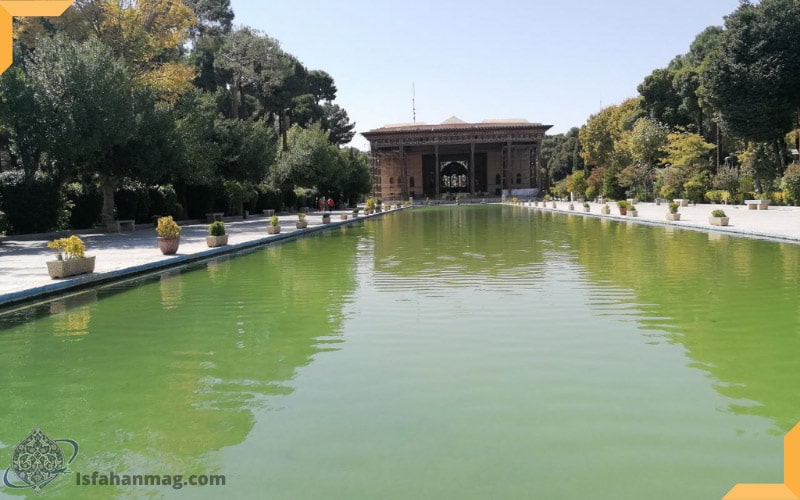
The name of Chehel Sotoon Palace
The main porch of Chehel Sotoon Palace is based on twenty columns. Many scholars consider the name of the palace to be a reflection of twenty columns on the beautiful and large pool of the mansion.
Of course, the role of the number 40 in Persian literature (this number is a sign of multiplicity) may be another reason for naming Chehel Sotoun.
History of Chehel Sotoon Palace and Garden
The period of Shah Abbas the Great
After the selection of Isfahan as the capital of Iran during the Safavid period, this city grew and developed rapidly and many buildings were built there.
One of the most important of these buildings was the Chehelston Garden and Palace complex, the cornerstone of which was laid during the reign of Shah Abbas I (Shah Abbas the Great).
According to these various narrations, Shah Abbas I during his reign needed to have a small pavilion next to his official palace, the High Palace of Qapu, where he performed his court work so that he could stay away from the noise of the monarchy and the state should rest in it.
For this reason, in the middle of Jahan Nama Garden (later known as Chehel Sotoon Garden), he ordered the construction of a small mansion in the shape of a pergola with rooms 12 meters high.
Of course, over time, this mansion was used to receive ambassadors, dignitaries, Iranian and foreign politicians and to hold small celebrations. Some historians have even written in their works that Shah Abbas I celebrated Nowruz in the 23rd year of his reign in this mansion.
Regarding Chehelston Garden, it is good to know that this garden had access to all the gardens around it at that time, including the gardens in the area of Chaharbagh Street and Naghsh Jahan Square, and its middle mansion, Chehelston Palace, through a tunnel to all the palaces of that period of Isfahan, namely the palace, Hasht Behesht of Isfahan and Aali Qapu were connected.
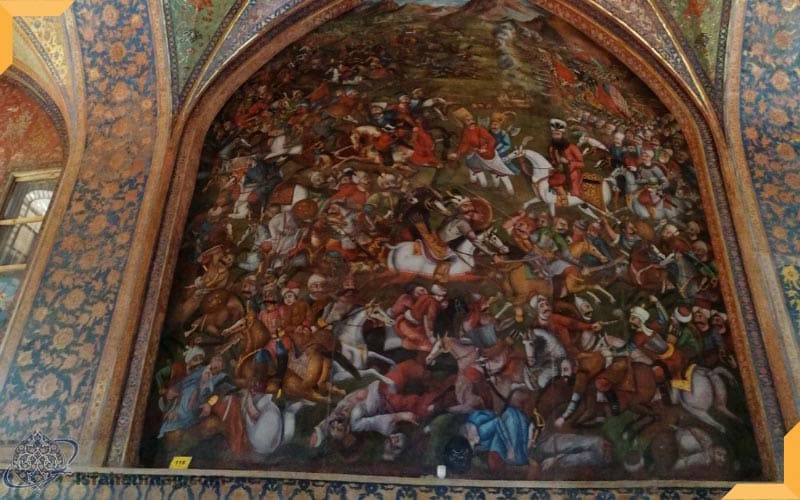
1- Chehelston Palace during the reign of Shah Abbas II
After the death of Shah Abbas, I and during the coronation of Shah Abbas II, it was decided to increase the size of the Chehelston mansion and change its use to a palace. The artists and architects of that period used this opportunity and their pure art and taste in the beautification of Chehelston Palace and Garden.
By order of Shah Abbas II, the inner and outer walls of the Chehelston mansion were decorated with lavish paintings and stunning mirrors, adding to the number of halls, rooms, and various parts.
Among these sections, we can mention the Hall of Mirrors, the 18-column hall, the two large rooms north and south of the Hall of Mirrors, the porches on both sides of the kingdom, and the large pool in front of the hall with all paintings, mirrors, tiled walls and ceilings.
Thus, Chehelston Palace became one of the first buildings in Iran to be decorated in this way with magnificent mirrors, large murals, and wooden columns.
Finally, the magnificent Chehelston Palace was inaugurated in 1056 AH (1024 AH), three years after the beginning of the reign of Shah Abbas II with his presence and foreign ambassadors.
After the construction and decoration of the vast halls of the palace were completed, this place was used as a place for the king to meet with the people and for the king to receive official guests.

2- Chehelston Garden and Palace in the time of other Safavid kings
Chelston Garden and Palace After the reign of Shah Abbas II continued its function of entertaining guests and people and remained one of the main administrative and government buildings of Isfahan.
Of course, in the twelfth year of the reign of Shah Sultan Hussein, an unfortunate event took place in the palace and this masterpiece of architecture and art became the prey of fire.
3- The fate of Chehelston Palace in the Qajar period
According to the writings of tourists such as Eugene Flandin and Pascal Cousteau who travelled to Iran during the reign of Mohammad Shah Qajar and also Madame Diolafoa in 1298 AH (1259 AH), the building of Chehelston Palace and Garden is still in its old state and did not change.
However, unfortunately in 1300 AH (1261 AH), during the reign of Zol-e-Sultan (ruler of Isfahan and son of Nasser al-Din Shah Qajar), the building of the palace and garden was severely damaged and many damages occurred, for example in During his time, the marble ponds and stone streams of the garden were filled, and the waterways were blocked.
Madame Dolafoa has described the arrangement of trees and plants in the Chehelston garden in her travelogues and gives an accurate picture of the garden during the Qajar period.
Tall sycamore trees with branches up to the top, along the main axis and on both sides of the pool, were decorated with lights, at their feet, flowers, regardless of colour and gender, appeared in the plots (garden). Inside the plots, fruit trees were also seen.
4- Pahlavi period
The condition of Chehelstone Palace improved during the Pahlavi regime, and the restoration work was entrusted to an Italian archeological institute.
Using old photographs of the palace, the institute installed new doors and windows in the old way and revived the paintings and drawings hidden under the plaster.
After these repairs, the palace was turned into a museum, where important works from different historical periods were displayed.
Chehelstone Palace Architecture
The architecture of this palace is a combination of Chinese, Iranian and French architecture. The palace has 20 columns and seems to be famous for its 40 columns due to the reflection of the columns in the water.
If you travel to Isfahan to visit the Forty Pillars Palace, a large porch with a length of 38 meters and a width of 17 meters will attract your attention.
This octagonal porch is on the east side of the forty-column palace and has 18 wooden columns 14 meters high made of sycamore and pine wood. The top of each column is decorated with paintings. The four middle pillars are located on four beautifully carved stone lions.
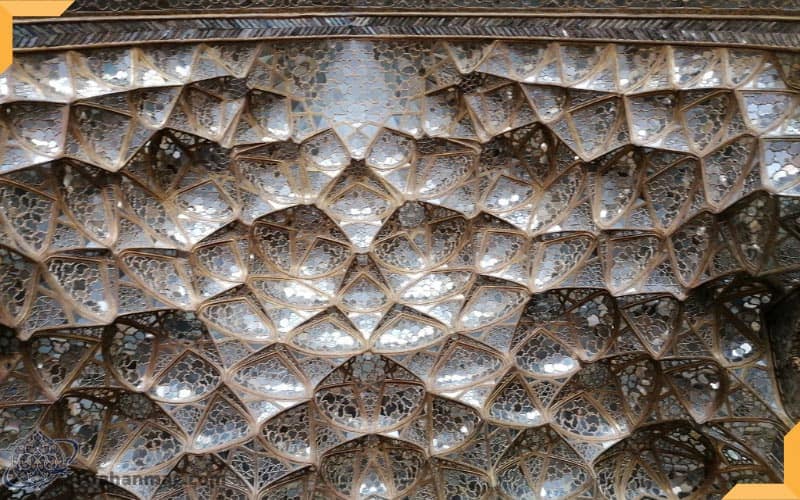
The stone lions are fountains that direct water into the marble pool between these four pillars. The roof of the porch is very spectacular and amazing. The roof is made of wood and is artistically decorated with porcelain knots, paintings and mirrors.
There are two columns at the end of the porch, 12 meters high, which overlook the Hall of Mirrors. In this part of the building, you will see mosaic mirrors and large mirrors. Also, you will see an inscription on which the year of construction is mentioned and dates back to the Safavid era.
Guide to visiting the Chehelston Collection
Main entrance of Chehelston Garden / We enter through the main door of the garden
The Chehelstoun Museum Garden has three entrances, the old and the main one facing east. When you enter the main entrance of the garden, you will see a short distance in front of you that leads you to the large and main pool of the mansion.
The pool is located on the main axis of the garden and stretches in an east-west direction. You can identify this axis through the trees planted in its path, and through this, you will find your way to the main pavilion, Chehelston Palace.
Swimming pool
The chehelstone Garden Pool is one of the most important parts of the complex and has been one of the reasons for its registration as a UNESCO World Heritage Site.
The pool has two parts, one in front of the mansion and the other in the back of the palace. The pool in front of the palace is 108 meters long and 16 meters wide and gives a special freshness and coolness to the garden area.
The design and systems of the pool are such that it reflects the image of the palace well in the water, and the darkness of the pool floor has made it more visible to the viewer. The back pool is not used today.
After a tour of the garden and pool, we reach the main mansion of the complex, Chehelston Palace.
chehelston palace
Columned porch
The first part of the palace that catches the eye at first glance is its columned porch, which consists of 20 columns and is located at a height of one meter from the surrounding land.
This porch has two parts and its front ceiling is decorated with mirrors, paintings, and geometric patterns.
The first part of this porch is located in the front part of the palace and is based on 18 wooden and stone columns and a small marble pool can be seen in the middle.
Of these 18 pillars, 4 of the middle pillars are located on stone lions in the past, water erupted from the mouths of these four lions and flows in a small marble pool in the middle of the porch.
Porch columns
Each of the main pillars of the porch is a sycamore or pine tree trunk, which today is covered with a thin layer of the painted board, but in the past was beautifully decorated with mirrors and stained glass.
The entrance of the hall or the hall of mirrors
We cross the columned porch and continue our way to the main space of the palace. Behind the columned porch, there is a place called the entrance to the hall or the Hall of Mirrors.
The surfaces, ceilings, and walls of the Hall of Mirrors are decorated with large brick mirrors and small and delicate mosaic mirrors, and for this reason, it is known as the Hall of Mirrors.
Above this hall is an inscription of Shah Abbas II in which the year of construction is mentioned and this palace is mentioned as the happiest building.
Alcove:
The smaller and higher part is located behind the entrance of the Hall of Mirrors, which is called alcove. This part has dimensions of 7 meters by 55 meters and its roof is covered with small mirrors.
The main hall or Ashraf Hall is one of the most important parts of the forty-column mansion
Ashraf Hall or the main hall with beautiful paintings of the Safavid period is very spectacular and amazing. On the west, south and north sides of Ashraf Hall, there are carved and inlaid windows.
These windows face the pond in front of the building and the garden space and is a place for light to pass into the hall.
In Ashraf Hall, six oil paintings can be seen, which are;
reminiscent of the feast of Shah Abbas
- the battle of Chaldoran
- Shah Tahmasb and the reception of the Shah of India
- Nader Shah’s battle with India
- Shah Ismail’s battle with the Uzbek Shibak
- Shah Abbas’s reception of Vali Mohammad Khan
- show the art of painting in Isfahan.
Along with these amazing paintings, there are also pictures of celebrations of kings and foreign ambassadors. Three domes are decorated with gold ornaments with amazing paintings.
Upstairs
At the top of the Chehelston Mansion, there is an attic that used to be the King’s private residence.
South columned porch
The south-columned porch is located at the end of Chehelston Palace and its surfaces are decorated with paintings from the late Safavid period.
Chehelstone Decorations and Gardens
The most spectacular part of Chehelston Palace is its beautiful carvings and unique decorations; decorations that immerse you in silence and show you the original Safavid art.
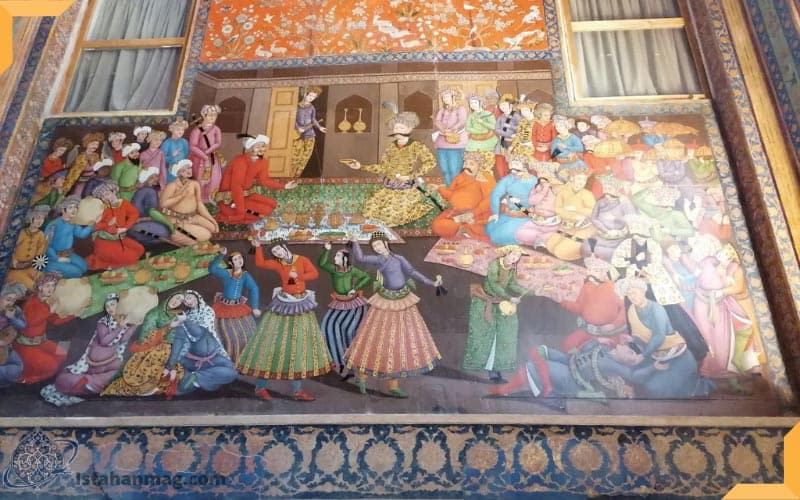
Paintings
The decorations used in Chehelston Mansion and Garden are very famous, but it is its unique paintings and drawings that make this collection one of the most beautiful Iranian buildings.
Paintings of the main hall of the palace
When we enter the hall through the main door, six magnificent paintings appear on the walls of the hall.
The first three paintings seen on the west side, from right to left, include a painting of:
- the feast of Shah Abbas Kabir and Vali Mohammad Khan
- the scene of the Battle of Chaldoran
- and the reception of Shah Tahmasb of King of India
on the east side of the hall, from right to left, are the scenes of :
- Shah Ismail’s battle with Uzbak Shibak
- Nader Shah Afshar’s battle with the Indian forces in the kernel
- and the reception of Shah Abbas Safavid of King Mohammad Khan of Turkmenistan, respectively.
The first panel/painting of Shah Abbas Kabir and Vali Mohammad Khan’s feast
The first painting in front of you after entering the mansion is a picture of:
the celebration of Shah Abbas I at the reception of Vali Mohammad Khan, King of Turkmenistan.
This painting shows the highest role and image of Shah Abbas I and his companions and servants.
The great commanders of the Shah can also be seen in this picture, and musicians are warming up a party in a corner and playing Iranian instruments.
The second panel /The scene of Shah Ismail I’s war with the Ottomans in Chaldoran
Along with the paintings of Shah Abbas and Mohammad Vali Khan, a scene from the famous battle of Chaldoran is engraved on the wall of the palace.
This painting shows the war of Shah Ismail I with the Ottomans in the Chaldoran plain, which was painted on the palace wall after the end of the Safavid era.
This battle ended with the severe defeat of the Iranians against the Ottomans under the leadership of Sultan Salim I.
It is said that this painting is the work of Mohammad Sadegh (Agha Sadegh), a prominent painter of the twelfth century who had great skills in the field of oil painting and left many works on the subject of feasts and battles.
The third painting / Shah Tahmasb I’s reception of the Shah of India
In this six-by-four-meter painting, a view of the reception of Shah Tahmasb I, of King of India, can be seen, which shows a part of the long-standing relations between the two countries.
In this painting, the painter has tried to show all the details including clothing, hat, wig, face, ornaments and instruments, and three types of musical instruments of that time which include the sitar, tambourine and organum(spinet).
The painting style of this work is miniature and belongs to the Isfahan School of Painting. The colours used in this painting were completely natural and mineral colours were used in it.
Fourth painting / Shah Ismail I’s war with the Uzbeks
This work of art is drawn in miniature style is based on the Isfahan school and the teachings of Reza Abbasi and shows the scene of the Taherabad war in Merv.
The colors are rich and often bright. The type of clothes and hats are drawn in the original form that existed at that time.
In this painting, Shah Ismail is seen in a yellow dress riding a white horse, and the Uzbek king (Shibak Khan) is also dressed in purple and riding a brown horse.
The escape of the Uzbek army and the capture of the Uzbeks can also be seen in this painting.
Fifth Panel / Kernal Battle
This painting shows a picture of Nader Shah’s war with Hindu Mohammad Shah Gurkhani in the battle of Kernal. After the Safavid era, this painting was added to the collection of paintings of Chehelston Palace and below it, the name of the painter “Agha Sadegh” is written.
Sixth painting / Shah Abbas II party in honour of Nader Mohammad Khan Shah of Turkestan
In this painting, a picture of Shah Abbas II’s Reception party of Nader Mohammad Khan, the ruler of Turkestan, can be seen to ask the Safavid King for help to take back his rule in 1056 AH (1024 AH). The Shah of Iran also sends an army to accompany him so that he can regain his kingdom.
Other paintings and drawings of Chehelston Palace
In addition to these 6 famous paintings, there are a number of paintings in other parts of the palace, some of the most famous of which are mentioned:
Above the plinth of Chehelston Main Hall are several small paintings depicting banquets and historical and national stories. In these pictures, young men and women are seen having fun with their slaves and maidens in nature.
On both sides of the main hall of the mansion, pictures of ambassadors and Europeans who traveled to Isfahan during the Safavid era (during the reign of Shah Abbas II) are painted.
On the walls of the north and south porches, there are also paintings of Georgian and Armenian girls who were hidden under plaster during the Qajar period.
Other decorations of the Chehelston collection
All the decorations of the Chehelston collection are not summarized in its paintings and drawings. Even the pool of the palace is not without these beautiful decorations.
If you look around the pool, you will see statues of lions and Anahita – the goddess of water – the statues that said can be brought here from other places and they date back to the Achaemenid, Sassanid, Parthian, Diyala, and Safavid eras.
Tile pieces of Aghasi Mosque, Khajeh Alam Mosque, and Darb Jobareh Mosque are other decorations that you can find in the south wall of the garden.
Be a little more careful, you can enjoy the beauty and art used in the tiled entrance of Qutbieh Mosque on the same wall.
If you go to the west side of the Chehelston Garden during your visit, do not miss the tiled entrance of the historic building of the door of the pavilion, which is said to date back to the reign of the “Agh Qaraqoyunlus” in Iran.

Chehel Sotoon Museum
The Chehelston Museum, also known as the Chehelston Museum Palace or the Chehelston Museum Garden, is a place to preserve the collection of Chehelston Palace artifacts and other old objects, books, and manuscripts from Isfahan.
The Forty Pillars Museum was founded in September 1958, and after several stages of reconstruction and restoration of the Forty Pillars Palace, it hosts manuscripts and historical manuscripts, decorative vessels, and works in the field of fine arts such as:
Chehelston Museum is the second oldest museum in Iran after Golestan Museum.
Objects in the Chehelston Museum include these collections:
- Collection of pottery and tile works
- collection of glassware
- glassware collection of coins from prehistoric times to present
- collection of works of the historical period and works of the Islamic period
Collection of Safavid works such as Kufi manuscripts of the Qur’an and marriage deeds, collection of lithographs and historical writings, collection of unique and old hand-woven carpets.
Best time to visit Chehel Sotoun Palace
You can visit this monument in all months of the year, but spring and especially May is the best time to visit Chehelston Palace.
Because, in addition to the mild weather, the garden around it is very fresh.
Of course, in summer evenings, due to the cool weather, this place is one of the most popular destinations.
If you are planning to take a photo, you can take good photos from 9 am to 11 am due to the sun facing the palace.
Also at night, Chehelston takes on a different look with lighting.
Where is Chehelston Palace? How to get t Chehel Sotoun
Chehelston Palace is located east of Lower Chaharbagh Street, south of Sepah Street and west of Naghsh Jahan Square. You can use public transport or a private car for access.
Imam Hossein Square metro station (Government Gate) or Imam Hossein Square bus station (Government Gate) is not far from Chehelston Palace and you can walk this route.
If you go by car, you can use the public car parks on the surrounding streets. Also, if you want to visit the palace from the Square, you can easily reach your destination with a little walk.
For this purpose, move from Sepah Street to the government gate. Turn left at the intersection of Governor Street, a little later you will see the Chehelston Museum Palace.
Sights near Chehel Sotoon Palace
Museum of Decorative Arts: 100 meters, Isfahan Natural Palace Museum: 200 meters, Hasht Behesht Garden and Palace: 200 meters, Naghsh Jahan Square: 300 meters
Thirty-three bridges: Approximately 1.9 km on foot, 1.8 km by car
Frequently Asked Questions
Where is Chehelston Palace?
Chehelston Palace is located east of Chaharbagh Pa’in Street, south of Sepah and west of Naghsh Jahan Square
What is the reason for naming Chehelston Palace?
he main porch of Chehelston Palace is based on twenty columns. Many scholars consider the name of the palace to be a reflection of twenty columns on the beautiful and large pool of the mansion. Of course, the importance of the number 40 in Persian literature may be another reason for naming Chehelstoon
What time do you visit Chehelston Palace?
You can visit this complex every day except the days of Tasua and Ashura, the death of the Prophet (PBUH) and Imam Hussein (AS), and the martyrdom of Imam Ja’far Sadegh (AS) and Imam Ali (AS). The visiting hours of Chehelston Palace are from 9 am to 5 pm.
What is the price of a ticket to Chehelston Palace?
A ticket (year 99) has a price equivalent to four thousand tomans for domestic tourists and a price equal to 50 thousand tomans for foreign tourists.
The Conclusion:
This palace is so much glorious and memorable that maybe, we can’t imagine Isfahan without it; the palace surely is one of those places that the tourists certainly visit.
It is not without reason that on the inscription that is registered for introducing the palace to future generations, it is said that this palace is the most auspicious building in the world.
 What is your opinion about this Iranian global attraction? Have you ever visited Chehel Sotoun? Which part of this building is more beautiful and more spectacular in your opinion?
What is your opinion about this Iranian global attraction? Have you ever visited Chehel Sotoun? Which part of this building is more beautiful and more spectacular in your opinion?
Share your viewpoint about this palace and Chehel Sotoun Garden with us.
